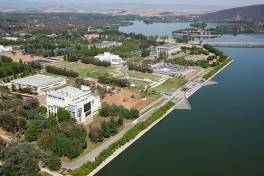Promoting Access to Justice

SYDNEY 28 JUNE 2013 - Hard on the heels of a Senate Inquiry reporting that significant fee increases in the Federal Courts should not be undone, the Federal Attorney-General and Assistant Treasurer have asked the Productivity Commission to examine how to improve access to justice in Australia. The choice of the Productivity Commission, and not another body such as the Australian Law Reform Commission, suggests that access to justice is viewed by government as a funding and service provision issue rather than a law reform issue.
The Productivity Commission is not a newcomer when it comes to evaluating courts. It produces an annual report on Government Services that includes courts. It tells us that in 2011-2012 total recurrent expenditure for all courts (state, territory and federal) exceeded income by $1.39 billion. It also has in place a framework of performance indicators that measure such things as ‘equity’, ‘effectiveness’ and ‘efficiency’. If the Productivity Commission can collect reliable data on the cost of accessing the civil justice system and the causes of those costs that will be a major step forward in Australia. Most legal reforms take place because the courts or government thinks it is a good idea based on anecdote. The lack of empirical information in the area for informing policy was noted by the Senate Inquiry.
Equally there is a need to be careful that access to justice is not reduced to just dollars and cents. There needs to be a steady focus on the core values of the civil justice system so that requirements like due process, open justice and judicial independence do not get lost in the fever of economics driven reform. Of note is that in the Productivity Commission’s 2013 Report on Government Services one of the measures of ‘effectiveness’ was ‘quality’ – meaning “governments’ achievement against the objective of providing due process”. However, the Report goes on to say that ‘quality’ does not yet have a suitable indicator for inclusion in the framework of performance indicators. The measurement of due process or procedural fairness is difficult compared to counting legal fees and days since a proceeding was commenced. As former NSW Chief Justice James Spigelman said back in 2001: “Not everything that counts can be counted”.
The enormity of the task for which the Commission has been given 15 months should not be underestimated. The scope of the inquiry is very broad. It includes expected topics such as examining the costs of lawyers and what drives those costs such as the market for legal services and billing practices. But it also asks the Commission to examine the level of demand for legal services, including unmet demand due to services being unaffordable, and the social impact of the cost of accessing justice services. The Commission is also asked to delve into the processes of legal institutions and suggest techniques to reduce costs such as ADR, technology, specialist courts and expedited procedures. Here we seem to be in the area of law reform despite the reference to a microeconomic reform body. Further, pre-existing reforms are to be evaluated which will allow reference to Lord Justice Jackson’s Review of Civil Litigation Costs in the UK, not to mention reforms closer to home such as the lower bar for summary judgment in the Federal and Victorian jurisdictions, the Federal Court’s Fast Track and the NSW Supreme Court’s Equity Division practice note on discovery.
A broader inquiry into cost as a barrier to access to justice than simply focussing on courts fees as occurred with the Senate’s Inquiry on Federal Court Fees is a welcome development. However, a great deal of work lies ahead with input needed from a range of expertise’s. Economists alone cannot address this issue. The Productivity Commission will release an issues paper and seek submissions: http://www.pc.gov.au/projects/inquiry/access-justice . The legal community should take the opportunity to ensure their voices are heard.


Add new comment